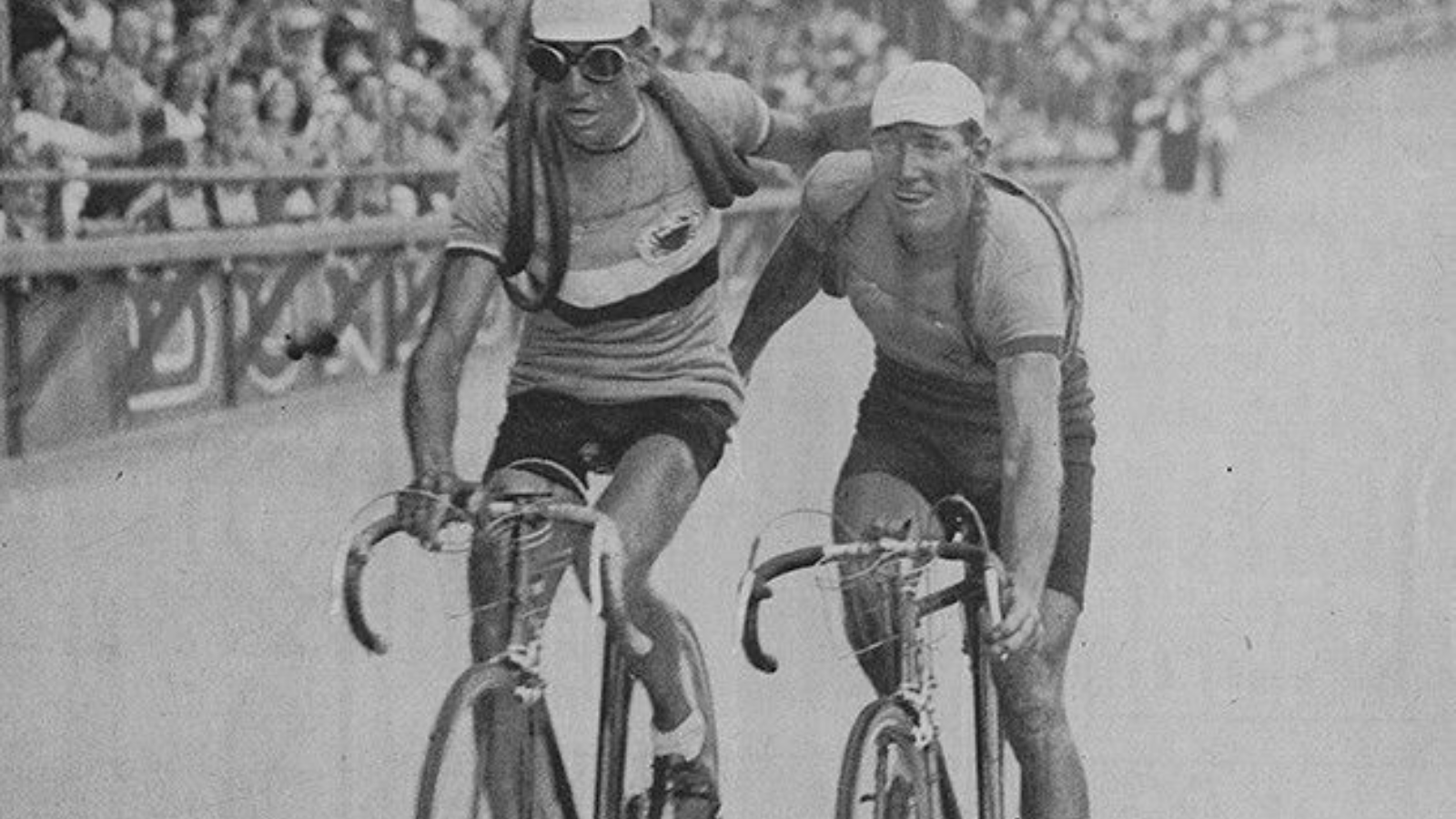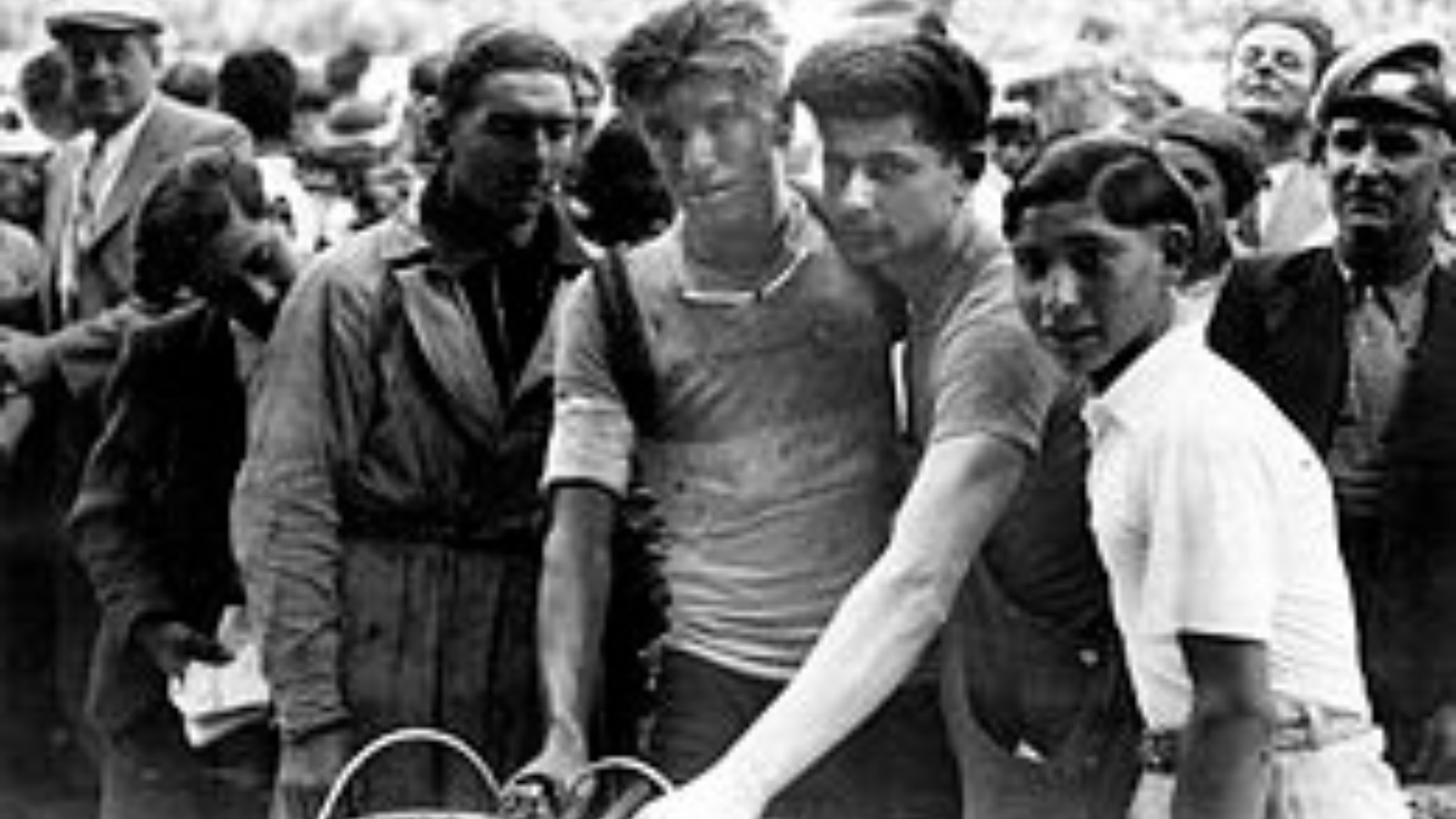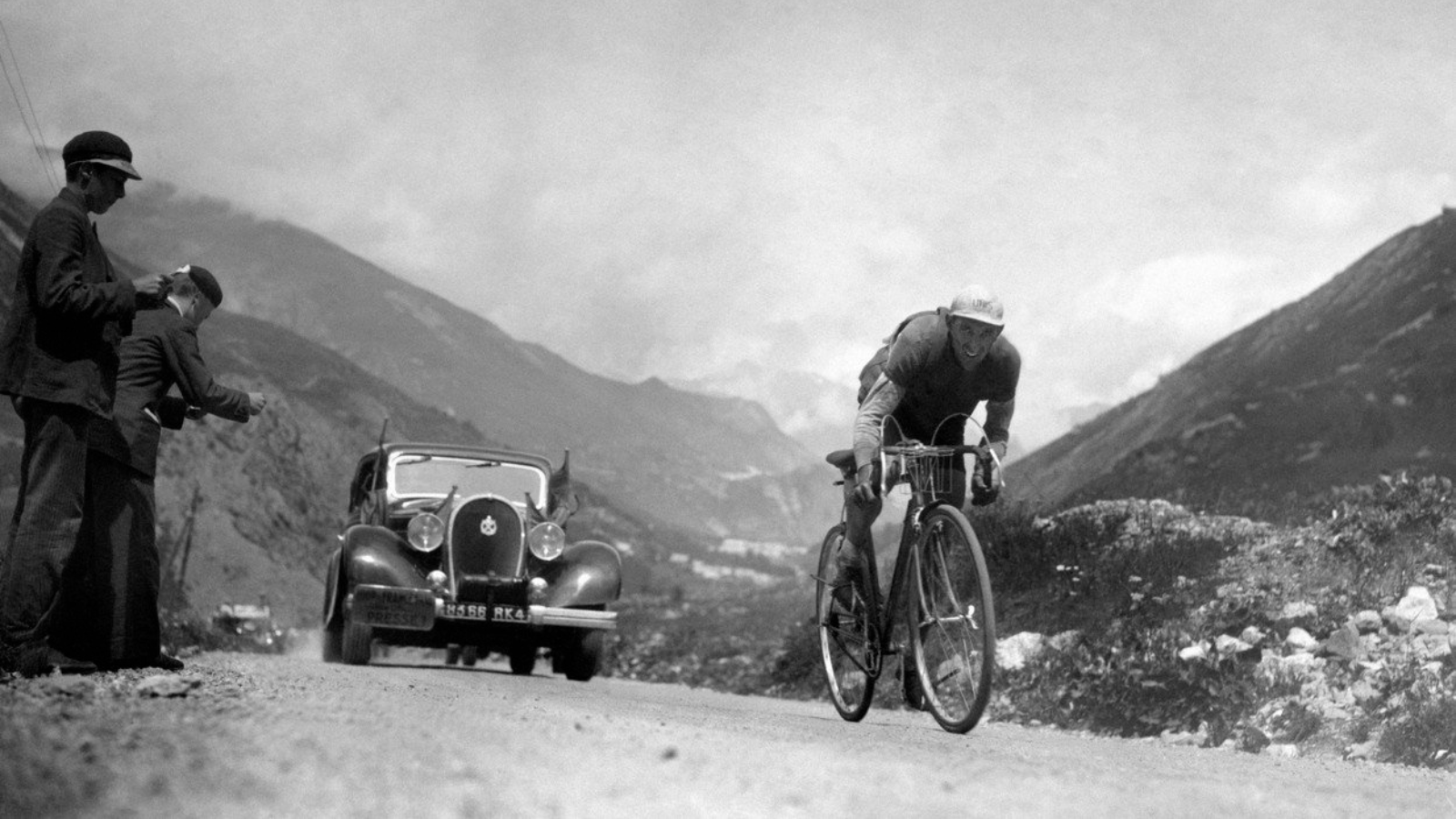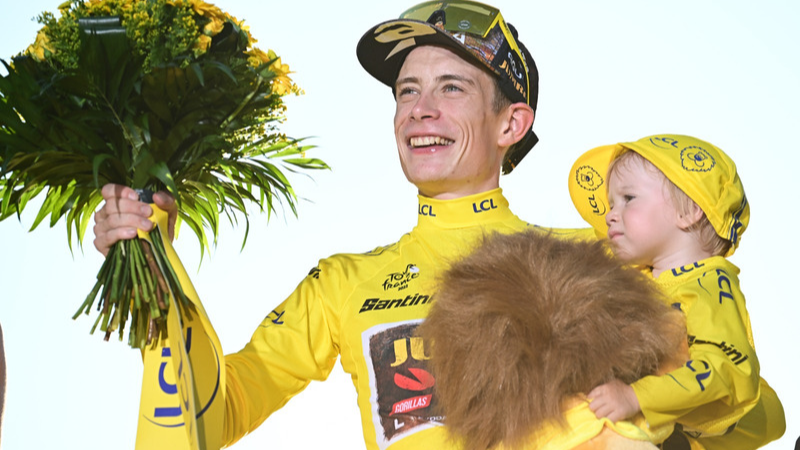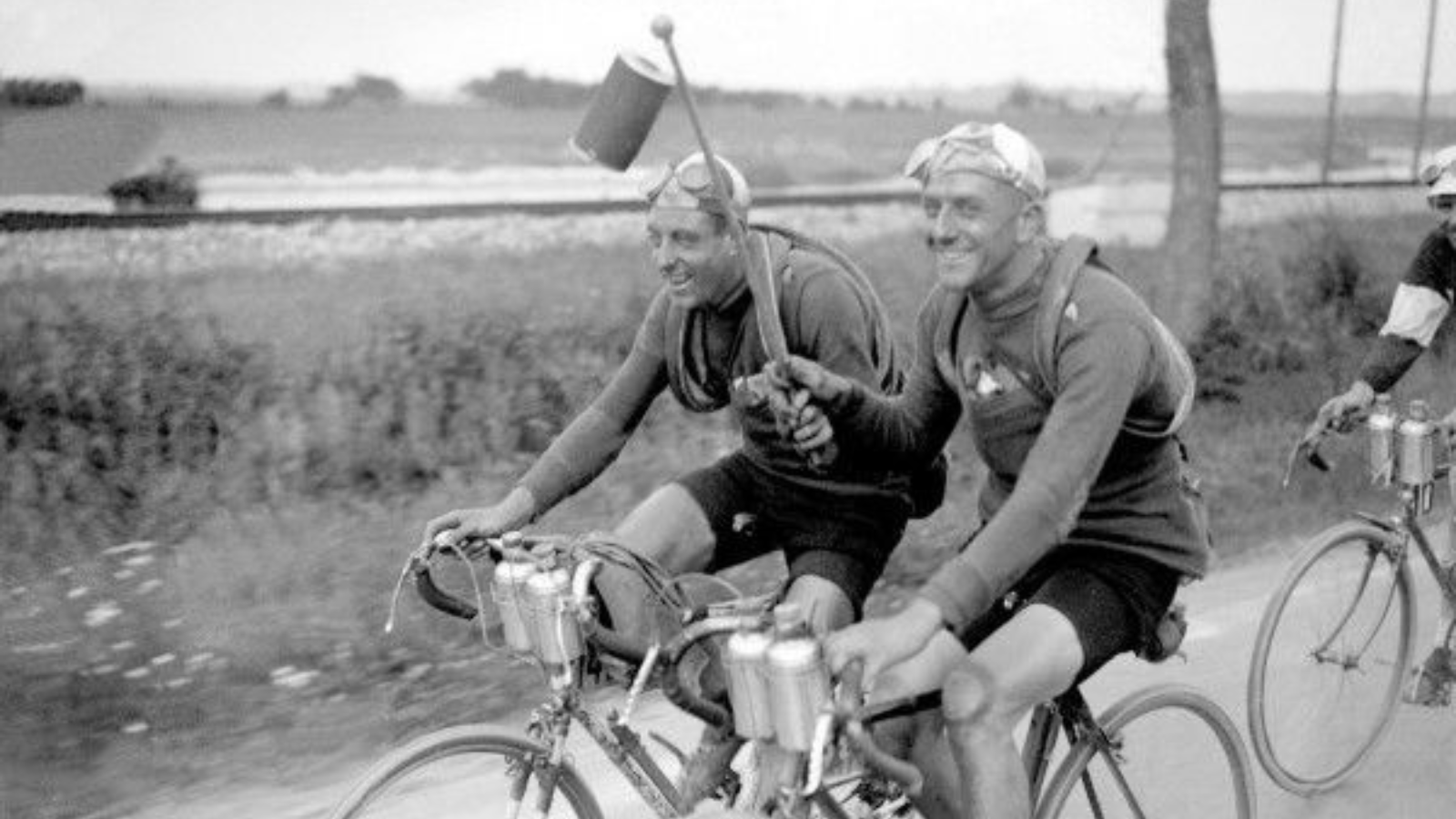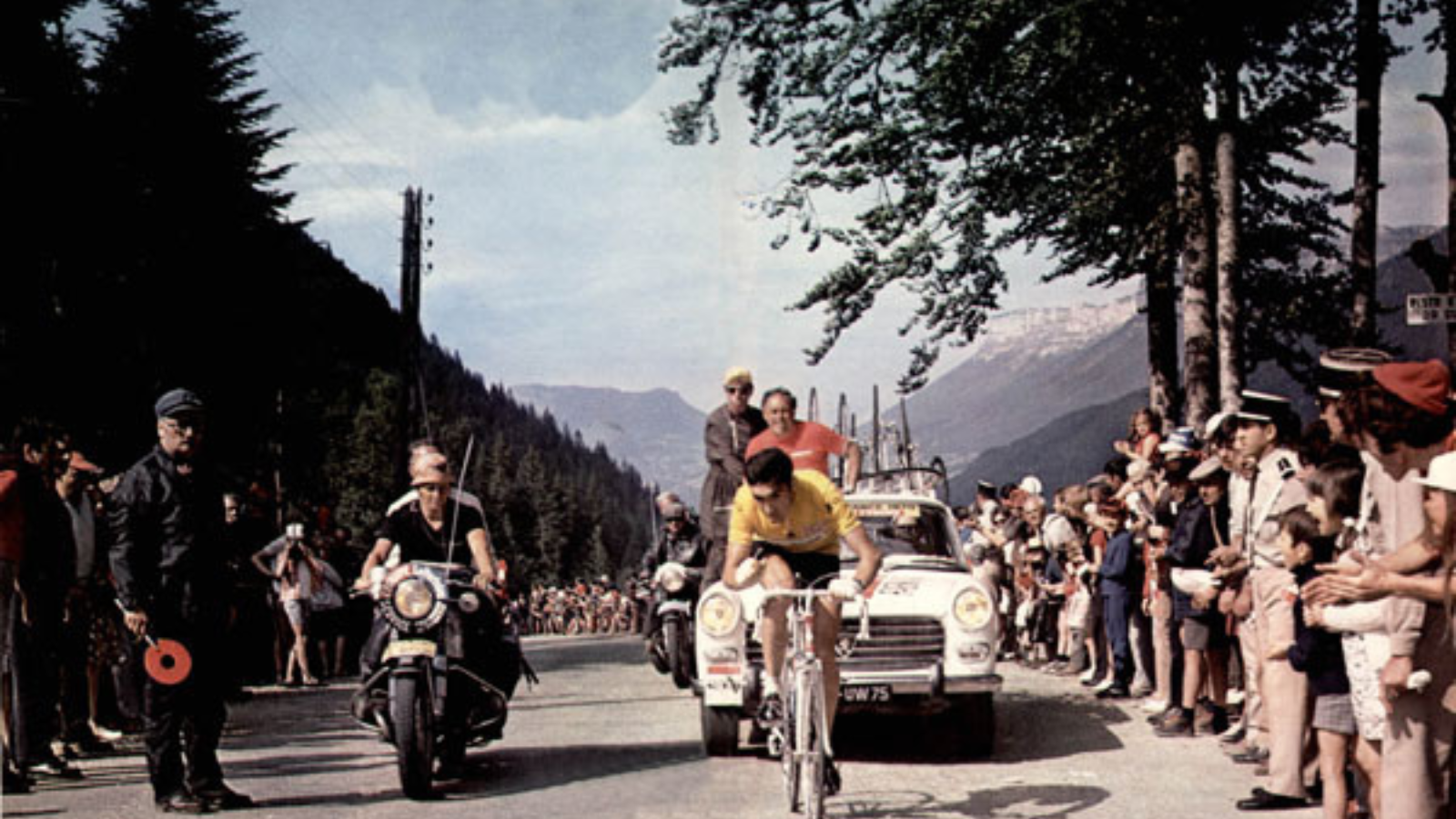Before Greg LeMond and Bernard Hinault on the top of Alpe d'Huez, there were André Leducq and Antonin Magne in Paris.
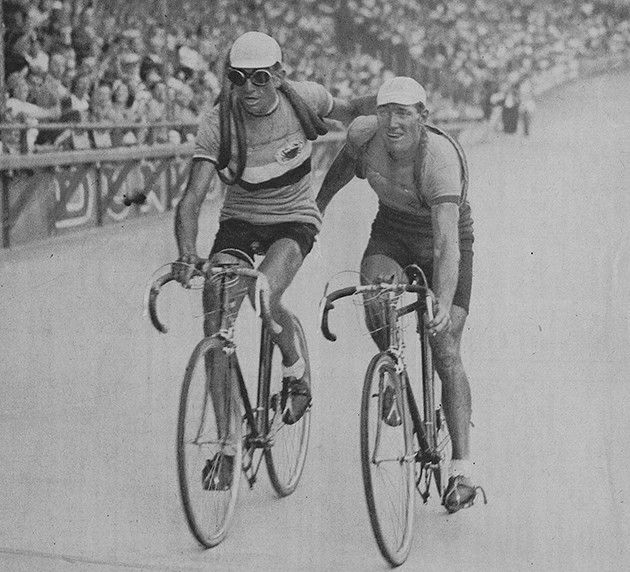
Two dominant French riders from the first part of the 1930s, both Leducq (1930 and 1932) and Magne (1931 and 1934) won the Tour de France twice.
In the very last stage of Tour de France 1938, the last edition for both cyclists to ride, they broke away from the peloton and reached the Parc des Princes (Paris) velodrome, the traditional finish of the race since 1903, together. They crissed the finish line side by side. Both of them were declared the winner of the stage.
This was André Leducq's 25th Tour de France stage victory, an astonishing result in his time. Since then only three riders were able to deliver better result: Eddy Meckx, Mark Cavendish (both 34 victories) and Bernard Hinault (28 victories).
MORE TOUR DE FRANCE IN THE 1930S
André Leducq and Antonin Magne crossing the finish line together (Tour de France 1938)
Before Greg LeMond and Bernard Hinault on the top of Alpe d’Huez, there were André Leducq and Antonin Magne in Paris. Two dominant French riders from the first part of the 1930s, both Leducq (1930 and 1932) and Magne (1931 and 1934) won the Tour de France twice. In the very last stage of Tour … Read more
Faces from the Peloton: Theo Middelkamp (1914-2005)
You would never guess in what kind of stage the first Dutch Tour de France stage winner, Theo (Theofiel) Middelkamp (1914-2005) gained his victory. In a mountain stage in the Alps, including Télégraphe, Galibier and Lautaret. Considering that even in the early 1950s, when Wim van Est, the first Dutch cyclist to wear the yellow … Read more
Fédérico Ezquerra on the Galibier (Tour de France 1936)
Col du Galibier was part of the 7th stage alongside with Thélégraphe and Lautaret at the Tour de France in 1936. (Usually, when the peloton climbs Galibier, they climb also Thélégraphe and Lautaret.) The 230 km long stage ended in Grenoble (hilltop finishes were introduced to Tour de France only in 1952), and a whole … Read more
MORE TOUR DE FRANCE FUN FACTS
The slowest and the fastest Tour de France
You might wonder which Tour de France edition was the slowest and wich. one the fastest. Here you have the answer.The slowest Tour de Francewas the 13th edition, held between 29th June and 27 July in 1919. The 5560 km long route of the race was divided into 15 stages. (And it wasn’t even the … Read more
Lanterne rouge – list of the last cyclists of every Tour de France
They used to say history remembers only the winners. Fortunately this is not the case of Tour de France history. The last ones, the receivers of the famous lanterne rouge get enough attention too. Lanterne rouge is an actual red lamp used to be served to the last rider of the race as some of … Read more
8 stage victories during a single Tour de France edition
There are only three riders who managed to win eight stages during a single Tour de France edition. One of them is Eddy Merckx, of course. He achieved it twice, in 1970 and 1974. The other two cyclists are Charles Pelissier (1930) and Freddy Maertens (1976). Charles Pelissier (1930) Charles Pelissier, the youngest brother in … Read more
